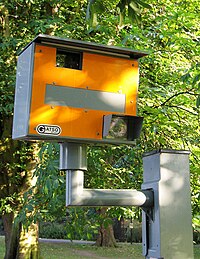
Photo from wikipedia
Occupancy models are widely used in camera trap studies to analyze species presence, abundance, and geographic distribution, among other important ecological quantities. These models account for imperfect detection using a… Click to show full abstract
Occupancy models are widely used in camera trap studies to analyze species presence, abundance, and geographic distribution, among other important ecological quantities. These models account for imperfect detection using a latent variable to distinguish between true presence/absence and observed detection of a species. Under certain experimental setups, parameter estimation in a latent variable framework can be challenging. Several studies have issued guidelines on the number of independent replicated observations (surveys) needed for each unchanging occupancy field (season) to ensure reliable estimation. In this paper, we present a spatio-temporal occupancy model, and show through a simulation study that it can be fit to data obtained from a single survey per season, so long as the number of seasons is sufficiently large. We include an application using camera-trap data on the Thomson's gazelle in the Serengeti in Tanzania.
Journal Title: Ecology
Year Published: 2018
Link to full text (if available)
Share on Social Media: Sign Up to like & get
recommendations!